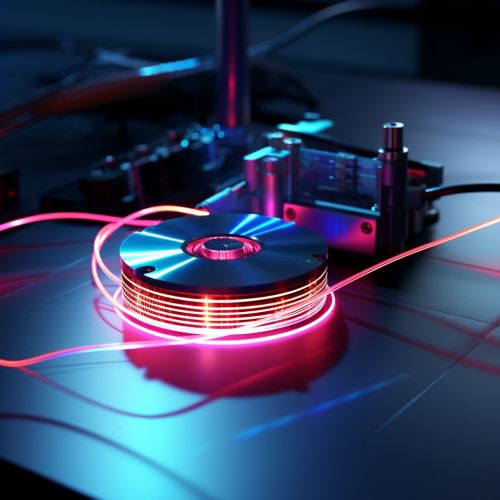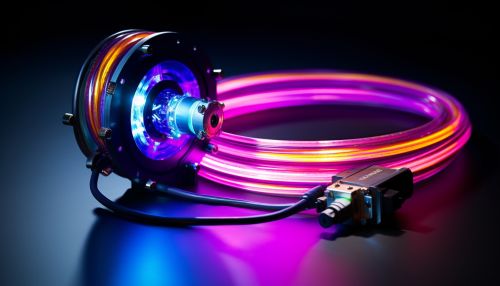Photonic device
Introduction
A Photonic device is a type of device that uses photons (light particles) to perform its functions. These devices are integral to many technologies, including fiber-optic communications, lasers, and solar cells. Photonic devices are an essential part of Photonics, the science and technology of generating, controlling, and detecting photons.


History
The concept of photonic devices originated in the late 19th century with the discovery of the photoelectric effect. This phenomenon, where light can be converted into electricity, paved the way for the development of photonic devices. The first practical application of this principle was in the creation of photovoltaic cells, which convert sunlight into electrical energy.
Types of Photonic Devices
There are several types of photonic devices, each with its unique applications and functions.
Lasers
Lasers are perhaps the most well-known type of photonic device. They generate a beam of light that is both spatially and temporally coherent, meaning it stays focused over a long distance and has a single, unchanging wavelength.
Fiber-Optic Cables
Fiber-optic cables are another common type of photonic device. These cables transmit information as pulses of light, allowing for high-speed, high-capacity data transmission.
Photonic Integrated Circuits
Photonic integrated circuits (PICs) are devices that integrate multiple photonic functions onto a single chip, much like an electronic integrated circuit. PICs are used in a variety of applications, including data transmission, signal processing, and sensing.
Solar Cells
Solar cells, also known as photovoltaic cells, are devices that convert sunlight directly into electricity. They are a key technology in renewable energy and are used in everything from small-scale applications like calculators and watches to large-scale solar power plants.
Applications
Photonic devices have a wide range of applications, from telecommunications to medicine to renewable energy.
Telecommunications
In the field of telecommunications, photonic devices like fiber-optic cables and photonic integrated circuits are used to transmit and process data at high speeds. This technology is integral to the internet and other forms of digital communication.
Medicine
In medicine, lasers are used in a variety of procedures, from corrective eye surgery to cancer treatment. Other photonic devices, like optical coherence tomography (OCT) machines, are used to image the body in high detail.
Renewable Energy
Photonic devices like solar cells are a key technology in renewable energy. They convert sunlight directly into electricity, providing a clean, renewable source of power.
Future Developments
The field of photonics is continually evolving, with new photonic devices and applications being developed all the time. Some potential future developments include the use of photonic devices in quantum computing, the development of more efficient solar cells, and the integration of photonic devices into everyday electronics.
